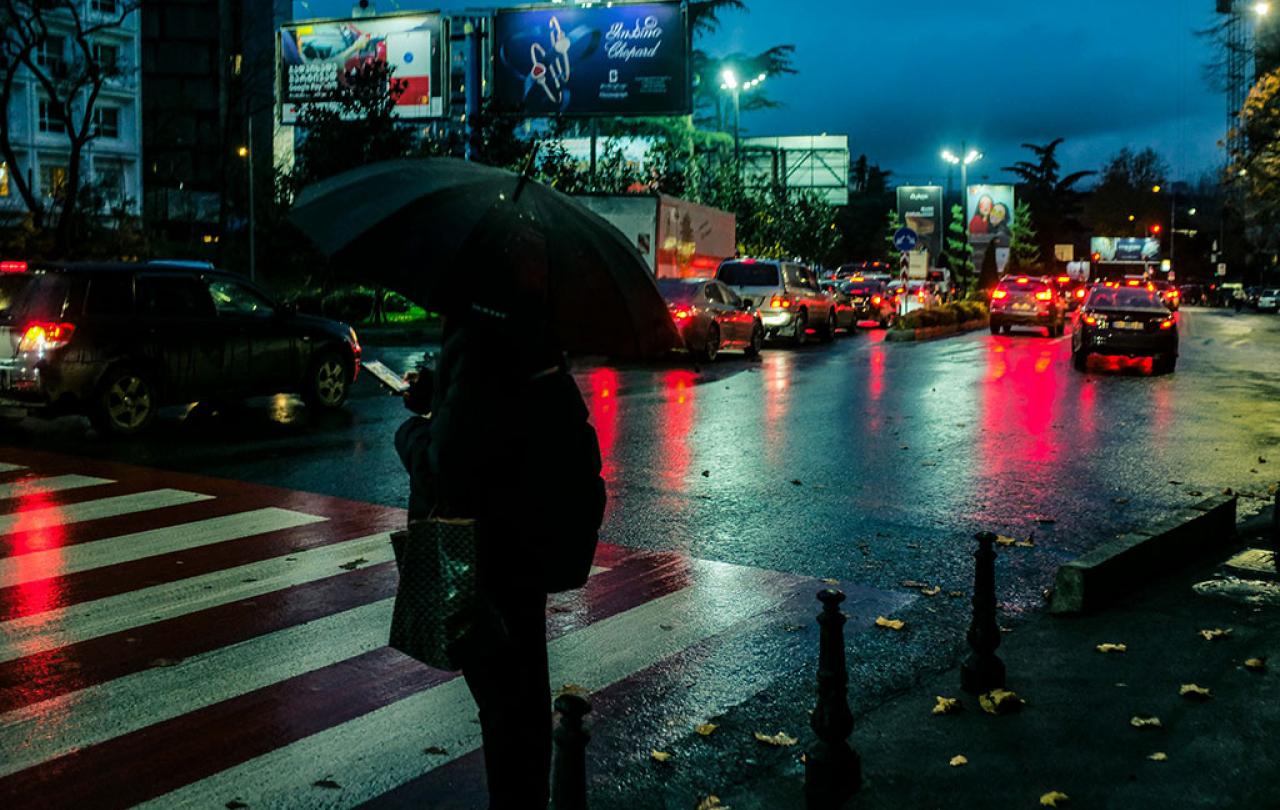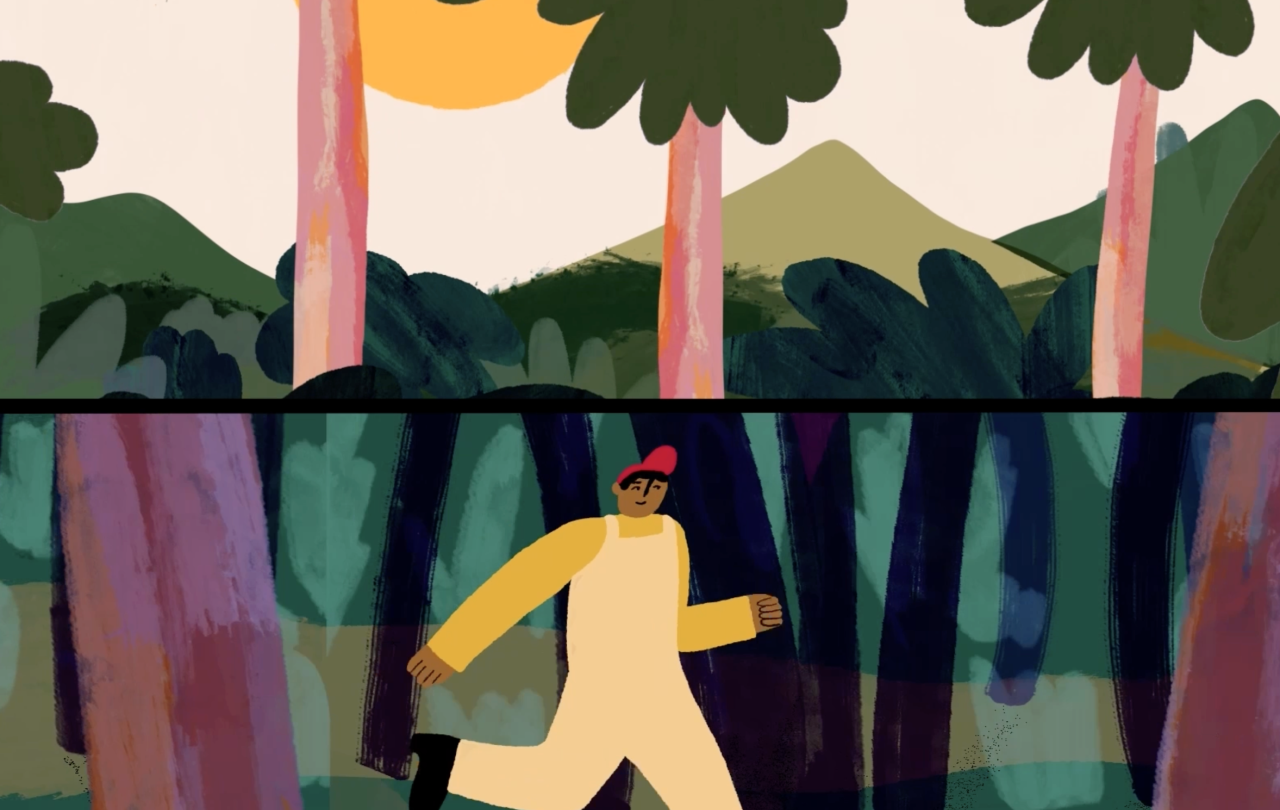
On the surface, Georgia has a lot going for it: natural beauty, historic sites, lovely food and wine.
It also boasts an extremely free market. Anyone can to set up a business of their choosing within a couple of hours, should they have the wherewithal.
But therein also lies the rub. Life is not so easy for those without such wherewithal - perhaps they don’t have sufficient capital, or vision; a disability prevents them; or they try but fail.
And then life is not so easy in Tbilisi.
My focus on my recent trip to Georgia, as an employee of an Iranian Christian charity, was its small Iranian population - and principally those who have claimed asylum there.
I spoke to several such individuals during my stay, and the conclusion that I reached was that Georgia is a lovely place to live, provided that you: a) have money; and b) are happy not to speak out about sensitive issues.
Which, honestly, sounds eerily like the country from which my Iranian friends fled in the first place.
When he ignored the warnings, the threats escalated. His car was broken into, and someone even came to his church, claiming to have a bomb strapped to himself.
Take Reza, for example, who left Iran eight years ago and came to Georgia in the hope that in a country where nearly 90 per cent are Orthodox Christians, he would be free to practise his chosen faith.
He even set up a church there, and for a while all was good. Until he started getting involved in protests against the regime back in Tehran.
Reza joined demonstrations outside the Iranian embassy in Tbilisi - which is in a lovely area of town, right next to the Russian embassy and also, somewhat awkwardly, that of Ukraine.
He also protested outside the “Ferdowsi Educational Complex” - a Shia school with a sign outside proclaiming it as an entity of the Iranian embassy.
And for these protests, Reza received some, at first, gentle reprimands. He was called by a private number, encouraging him not to take such action again in the future.
When he ignored the warnings, the threats escalated. His car was broken into, and someone even came to his church, claiming to have a bomb strapped to himself.
It was only at this point that Reza decided, against his initial intentions, to claim asylum.
But though the Georgian immigration service eventually acknowledged him to be a Christian - unlike many of his fellow Iranian asylum-seekers - they did not accept that this fact would put him at risk of persecution were he to return home.
To which the only rational response is a wide-open mouth and outstretched arms.
Have the Georgian immigration service not read the news? Do they not know that Christians - and more specifically, evangelical Christians and converts like Reza - face sustained and systematic persecution?
The answer to this question, I was to discover, is two-pronged.
Firstly, there is Georgia’s close relationship with the Islamic Republic, the reason for which, sadly and all too predictably, is of course money.
“Georgia is a small country,” a lawyer who deals with immigration cases like Reza’s told me.
“It’s surrounded by three big countries: Russia, Turkey and Iran, and can’t afford to have bad relations with all of them.”
Both Russia and Turkey have history of seeking to occupy Georgia, while Russia has made no secret of its hope of re-establishing the territories it once held, including, one presumes, Georgia.
In this context, it is little wonder that little Georgia does not feel able to cast aside so lightly its relationship with its third mega-neighbour, Iran.
And when an Iranian claims asylum in Georgia - on whatever grounds - what message would it send for the Georgian government to recognise that claim?
In the case of Christians like Reza, the message would clearly be that Iran persecutes Christians, which is an uncomfortable reality for a close ally of Iran to publicly admit.
You can search his name on Google, in both English and Persian, and it’s safe to say that what you would find would not please the Islamic Republic.
The second prong at play, meanwhile, which is equally uncomfortable to speak about, is the reality that in general Georgia’s Orthodox Christians tend to share some of Iran’s ill-feeling towards evangelicals.
“They think of us the same way as Jehovah’s Witnesses,” Reza explained.
“A Georgian friend of mine accused me three times of being a spy for America,” another convert told me.
Another, whose case was rejected because Georgia’s immigration service did not accept he was a Christian, told me the questions he was asked in his interview related only to elements of the Orthodox faith, about which he had no idea.
And when this individual sought to explain his own reasoning for his deeply held faith - for which he was arrested in Iran - they told him he could only answer the questions posed.
And so he said that he could not. And so they rejected his claim, declaring that it had not been established that he was a Christian.
An easy win.
I could focus now on the particular challenges faced by asylum-seekers who are unfit to work - two of whom I met, and who receive no support from the state - but I would like to close with one final example which I think highlights the absurdity of the situation.
And that is the example of Behzad Asiaie, an Iranian whose claim for asylum was based on his political activity and not his faith, although he has since converted to Christianity - for which he blames Reza, as, no doubt, would the Iranian and dare I say even Georgian government.
The striking thing about Behzad’s case is that it’s extremely well documented. You can search his name on Google, in both English and Persian, and it’s safe to say that what you would find would not please the Islamic Republic.
For one thing, Behzad has already spent a year in Tehran’s Evin Prison for his activism. Added to that, since arriving in Georgia five years ago, with no intention to claim asylum, he started a new activist group called Hamrasho (which means “all together”), which has organised protests about various things outside the edifices of the Islamic Republic in Tbilisi.
As part of the protests, which is where Behzad met Reza, Behzad even filmed himself burning images of Iran’s Supreme Leader, and published it on social media.
So, when the Georgian government rejected his eventual asylum case and told him that they didn’t think he would have any problem were he to return to Iran, the jaw really must drop open.
My conclusion upon leaving Georgia was that it really is a lovely country - provided that you have money and don’t make too much noise.
I put this perspective to a Russian couple, who I met on my last night in town, and they - like Reza and Behzad before them - nodded in agreement.
For they, like my Iranian friends, are exiles, having fled Russia because they are against Putin’s war.
They told me they know of no other Russians among the thousands in Tbilisi who support Putin’s war, but nor do they know any who would be foolish enough to protest about it - whether back home, or outside the Russian embassy in the lovely Vake district of Tbilisi.
I penned this article on my last night in Georgia in a Ukrainian restaurant housed roughly between the two edifices of the Islamic Republic of Iran, which felt about right.
The entire restaurant is painted in the colours of the Ukrainian flag; the Wifi name is “Slava Ukraine”; and the password, I was told, translates as “super slava”.
Which seems to be about the loudest protest that one can get away with in Tbilisi.





